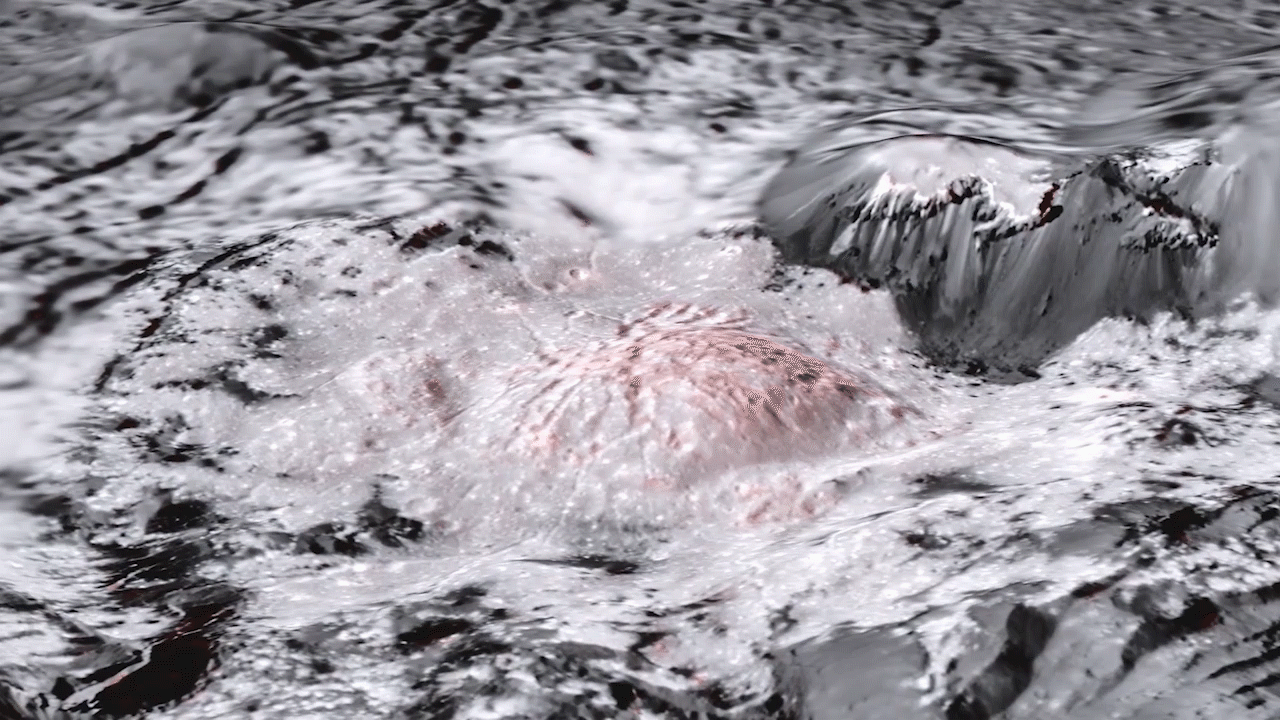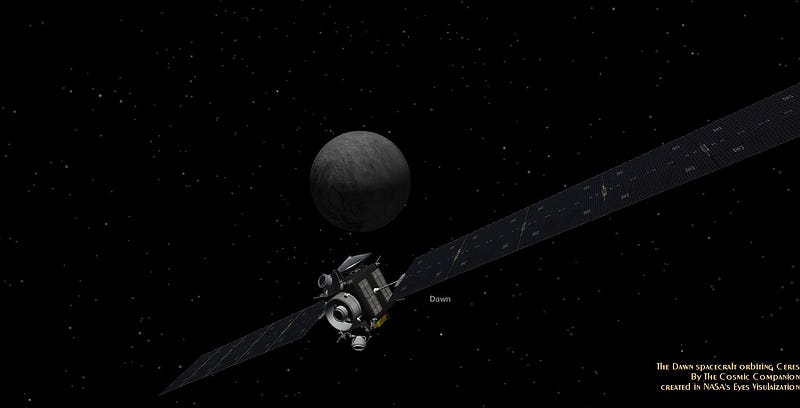Ceres: The Water-Rich Dwarf Planet and Its Implications for Life
Written on
Chapter 1: Ceres – A Unique Dwarf Planet
Recent findings from NASA's Dawn spacecraft indicate that Ceres, the largest dwarf planet in the inner solar system, is abundant in water. This revelation opens up exciting questions about the potential for life beyond Earth.
Data collected by Dawn, the first robotic spacecraft to orbit a dwarf planet, showed that Ceres is surprisingly active, with an ocean beneath its icy surface that is significantly deeper than any ocean on Earth.

The bright areas within Occator Crater are believed to be caused by substantial deposits of salty water. This discovery is pivotal in understanding the planet's geology and potential habitability.
Are You Familiar with Ceres?
Ceres was first identified on January 1, 1801, by Italian monk Giuseppe Piazzi, who tracked it for 41 days before illness interrupted his observations. During this time, Ceres moved into the Sun's halo, making it difficult for other astronomers to confirm its existence.
The renowned astronomer Johannes Kepler had previously predicted that a planet would orbit between Mars and Jupiter, and Ceres was initially thought to be that planet. However, due to the limited observations available, accurately locating Ceres again proved challenging.
Ceres was eventually re-identified, but shortly after, it was reclassified as a planet when other bodies were discovered in the same region. In 1802, the term "asteroid" was introduced to describe these smaller celestial objects.
Ceres is named after the Roman goddess of agriculture, and it holds about one-quarter of the total mass of the asteroid belt. Despite its size—only 476 km (296 miles) in diameter—Ceres is still considerably smaller than Pluto. In 2006, it was designated as a dwarf planet due to its unique characteristics.
Faculae on Ceres: New Discoveries

When Dawn arrived at Ceres in 2015, it became the first spacecraft to explore a dwarf planet. As it approached, two bright areas were discovered, known as Cerealia Facula and Vinalia Faculae.
In addition to these bright regions, the spacecraft found conical hills in Occator Crater, resembling the ice formations known as pingos found in Earth's Arctic regions. This finding is significant as it marks the first observation of such structures on a dwarf planet.
Research indicated that the density of Ceres increases towards its core, implying that salt and mud are settling at the center of this small world.
By the end of its mission in October 2018, Dawn had captured images from just 35 kilometers (22 miles) above Ceres' surface, revealing unprecedented details of the planet's shiny patches.
NASA scientists concluded that these bright areas are primarily composed of sodium carbonate. This substance likely originated from liquid that seeped up to the surface and evaporated, leaving behind a reflective salt crust. However, the source of this liquid remains a mystery.
The first video titled "Dwarf Planet Ceres HAS WATER" explores the implications of Ceres' water-rich environment and what it could mean for the search for life on other celestial bodies.
Salty Ocean Beneath the Surface
Analysis of data revealed that sodium carbonate, commonly known as soda ash, was deposited on Ceres' surface by salty water lying beneath its frozen crust. Researchers believe this water rose from below before freezing, resulting in the bright white patches visible today. The ocean beneath Ceres may extend to depths of 40 kilometers (25 miles)—about four times deeper than Earth's deepest ocean trench.
While some icy moons benefit from tidal heating due to their proximity to larger planets, Ceres lacks such warmth. Nonetheless, the presence of these saline deposits suggests similarities with water-rich moons elsewhere in the solar system.
A Geological Journey
Micrometeorites continuously striking Ceres' surface contribute to darkening the salt deposits, indicating that these bright regions are geologically young. This observation prompted engineers to use the Dawn mission to investigate the bright patches further.

The analysis determined that these patches are less than two million years old and contain salt molecules bonded with water and ammonium chloride.
Dawn discovered evidence that liquid water reached the surface in these areas, reinforcing the idea of liquid oceans beneath Ceres' surface. Principal Investigator Carol Raymond noted that two main pathways enable liquids to rise to the surface. For the significant deposit at Cerealia Facula, salts originated from a slushy area just below the surface, melted by the heat from an impact that created the crater about 20 million years ago.
As the impact heat subsided after a few million years, fractures formed during the impact may have allowed brine to continue percolating upward.
Dawn was the first spacecraft to orbit both Vesta, a giant asteroid, and Ceres. When the spacecraft's hydrazine fuel for orientation and power ran low, engineers positioned it into a high orbit, ensuring it wouldn't crash onto Ceres for many decades.
If Ceres can maintain liquid water, researchers speculate that other dwarf planets may also harbor liquid water, increasing the possibility of discovering extraterrestrial life. With ongoing discoveries of lifeforms thriving in extreme conditions on Earth, the chances of finding life beyond our planet become increasingly plausible.
James Maynard, the founder and publisher of The Cosmic Companion, resides in Tucson, Arizona, with his wife, Nicole, and their cat, Max.
Did you find this article insightful? Join us on The Cosmic Companion Network for our podcast, weekly video series, informative newsletter, and news updates on Amazon Alexa!
The second video titled "Why It's 100% Worth Returning To Ceres" discusses the importance of future missions to Ceres and what we can learn about the potential for life in our solar system.